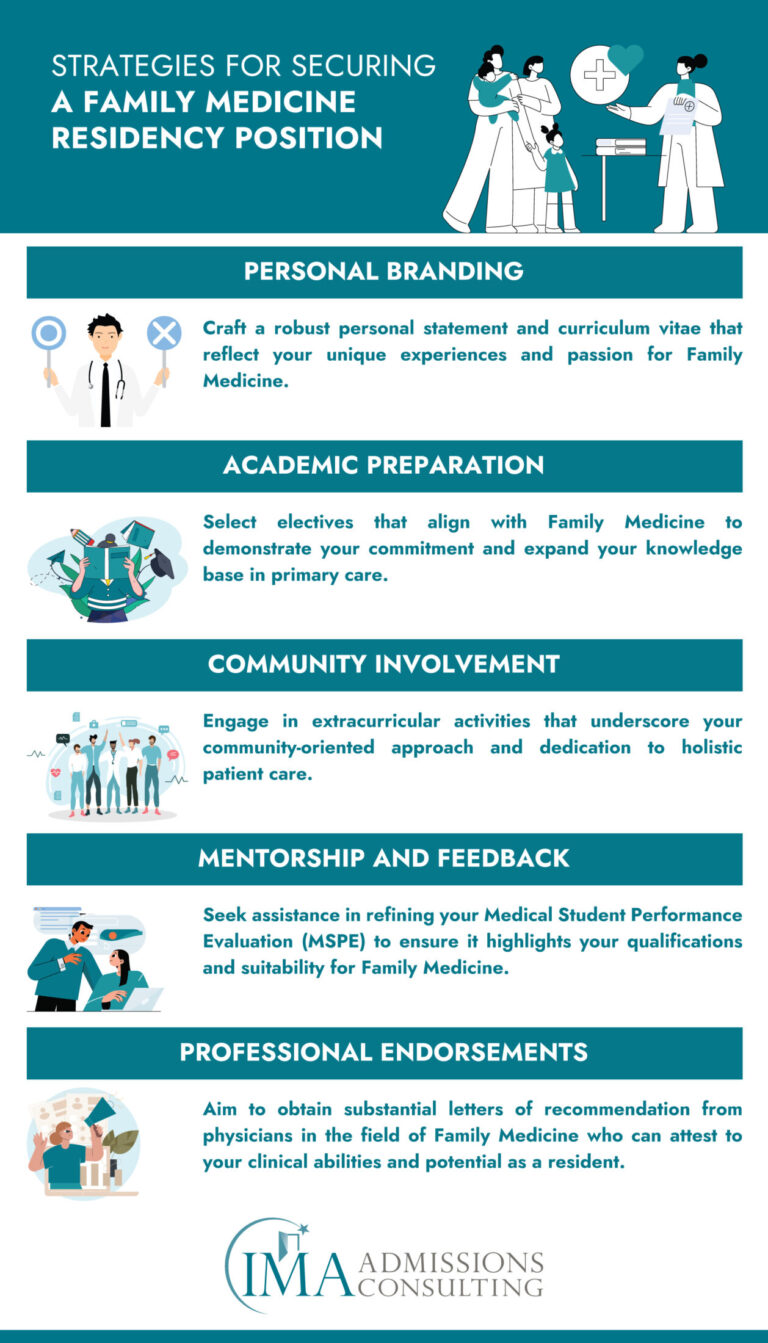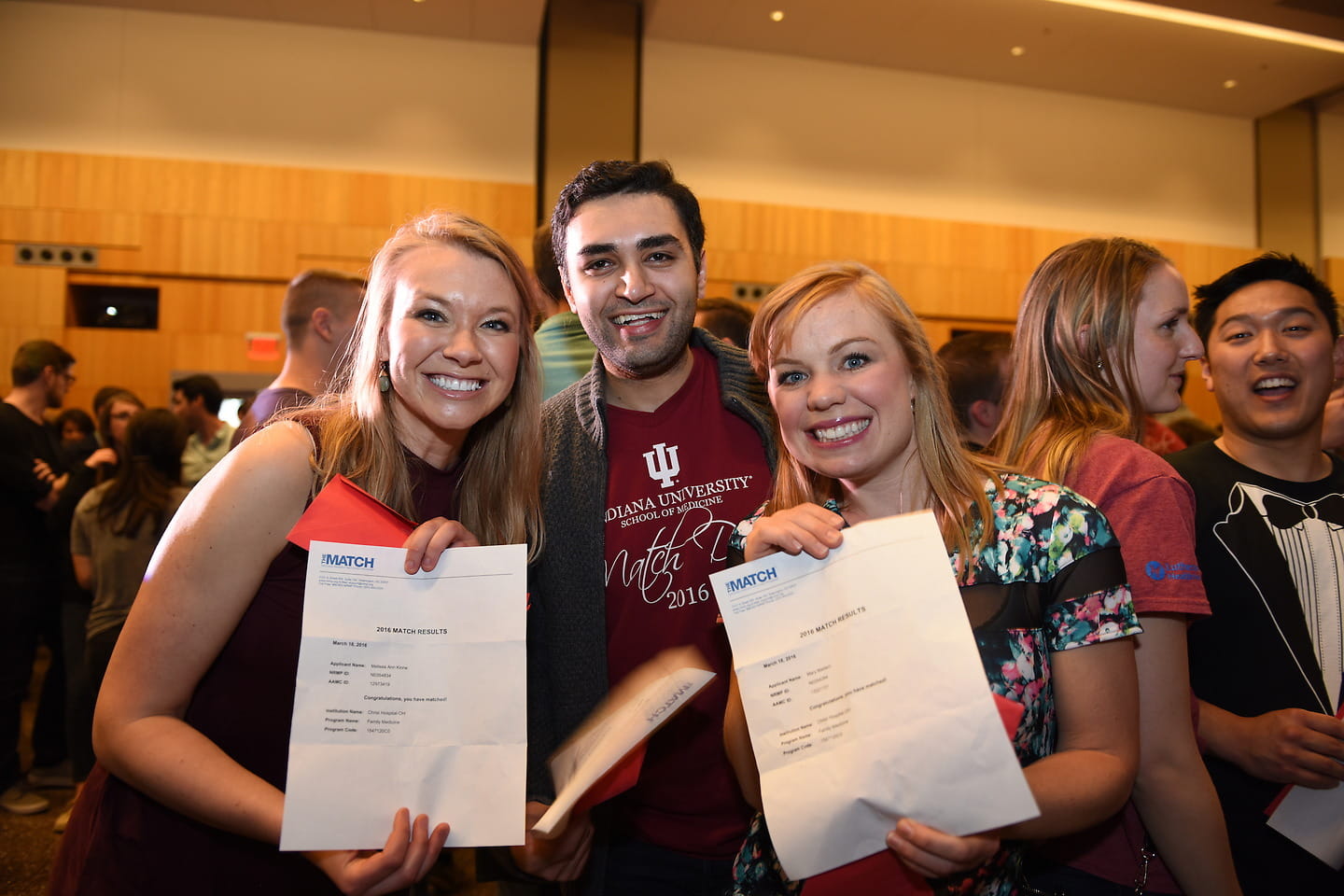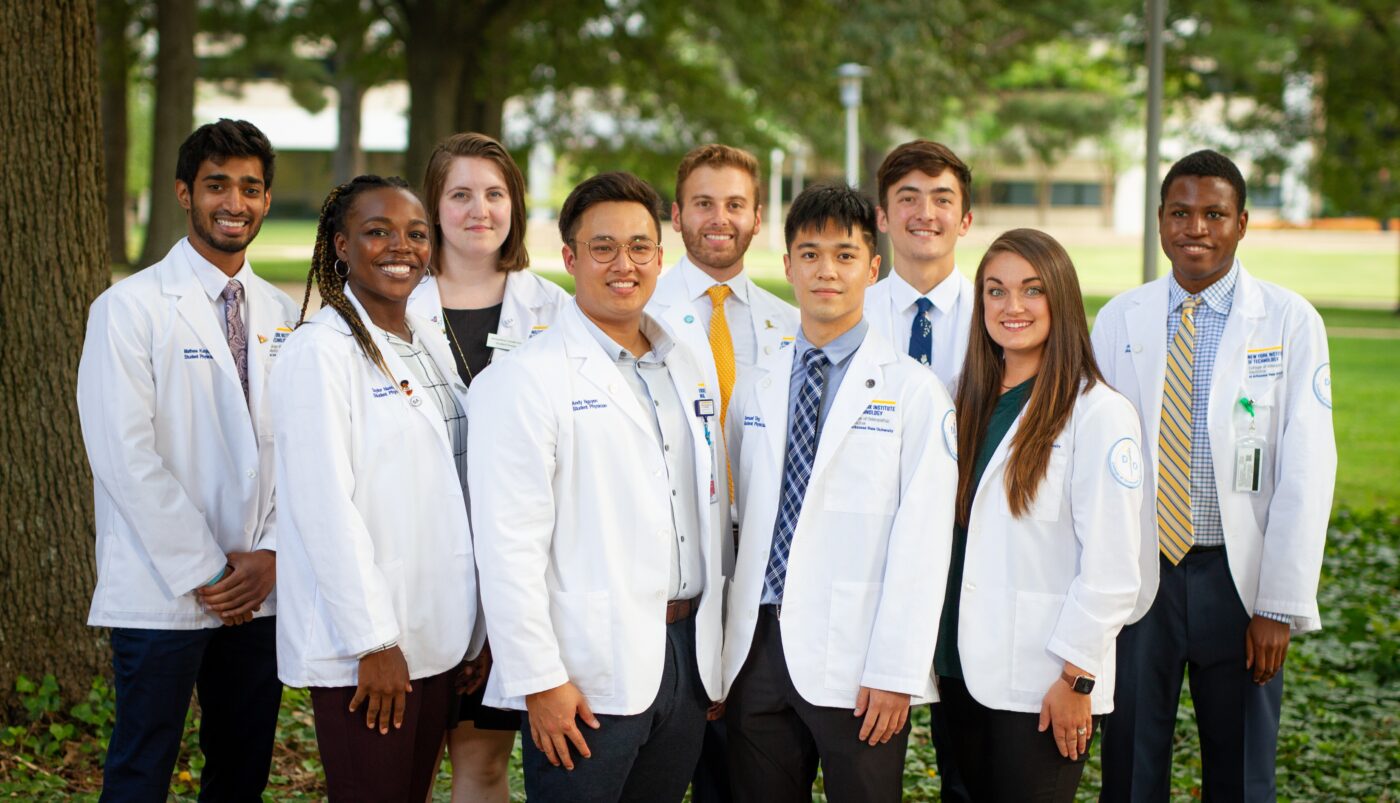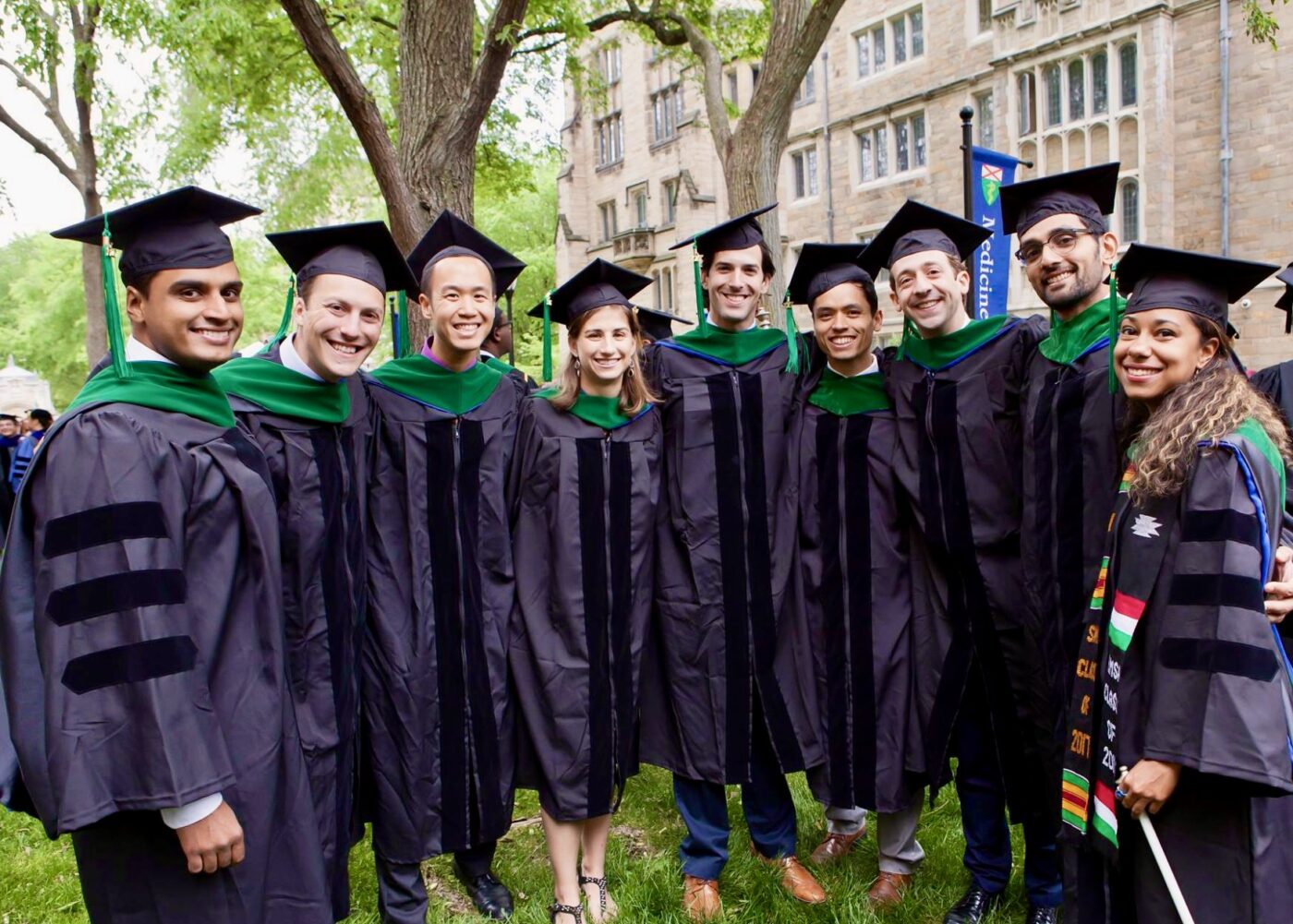Transitioning from medical school to a residency program is a defining moment in a medical professional’s career. The residency match rate is a key indicator of a medical school’s effectiveness, reflecting the proportion of graduates who secure residency positions in their preferred fields.
This guide delves into the intricacies of match rates, exploring the factors that contribute to a successful match. It also discusses the importance of these rates in guiding medical students’ decisions when choosing a medical school, considering aspects like program reputation, alumni success, and alignment with career goals.
We aim to provide a comprehensive understanding of the residency match process, the most competitive medical specialties, and the least competitive specialties, offering insights into how students can enhance their prospects of matching with their desired residency programs.
Match Week for the Main Residency Match® takes place the third week in March. It is the period of time beginning at 10:00 a.m. ET on Monday and ending at 12:00 p.m. ET on Friday when applicants and programs learn the results of the Match.
Most Competitive Medical Specialties
The most competitive medical specialties are characterized by high demand, limited residency slots, and intense training requirements. Specialties such as Dermatology, Neurosurgery, and Plastic Surgery often top this list due to their high compensation, impactful work, and the specialized skill set required. The competitive nature of these fields require applicants to have exceptional academic records, extensive clinical experience, and often, research contributions.
Least Competitive Residencies
The least competitive residencies, like Family Medicine, Psychiatry, and Pediatrics, offer more positions and focus on holistic, long-term care. These fields are essential for community health, and their comprehensive nature makes them accessible to a wider range of residency candidates. Despite being less competitive, these specialties demand a deep commitment to patient care and the ability to manage diverse medical cases.
Residencies Ranked by Competitiveness
Residencies are ranked by competitiveness based on factors like fill-rates, applicant-to-position ratios, and program reputation. Specialties requiring highly specialized training or those offering a work-life balance tend to be more competitive. Understanding these rankings helps applicants align their career aspirations with the right residency programs.
MSI Competitive Index
The Medical Specialties Index (MSI) Competitive Index is used to gauge the competitiveness of medical specialties. It considers factors such as the number of applicants, positions offered, and match rates. The index provides a comparative view of different specialties, helping applicants make informed decisions about their residency choices.
The Medical Specialties Index (MSI) Competitive Index is a critical tool for prospective medical residents. It aids in evaluating and comparing the competitiveness across different medical specialties. This comprehensive tool is especially crucial in a field where the choice of specialty can significantly influence a professional’s career path, work-life balance, and even financial future.
To effectively use the MSI Competitive Index, one must first understand what the index measures. The primary metrics include the number of applicants for each specialty, the number of positions available, and the match rates. These factors together provide a snapshot of how demanding or accessible a medical specialty might be.
Understanding the Numbers: The first step is to look at the raw data. How many candidates are applying for each specialty? How many positions are available? This gives an initial sense of the supply (available positions) versus the demand (applicants).
Analyzing Match Rates: Match rates represent the percentage of applicants who successfully secure a residency position in their chosen specialty. High match rates may indicate a less competitive field, or conversely, a field with ample positions relative to the number of applicants. Low match rates could suggest a highly competitive specialty or a shortage of positions.
Comparative Analysis: The true value of the MSI Competitive Index lies in its ability to compare specialties side by side. Users can identify trends and gauge where their chosen fields stand in terms of competitiveness. This comparative view is beneficial for making informed decisions.
Contextual Consideration: While numbers are informative, they don’t tell the whole story. Prospective residents should consider these statistics in the broader context of their professional goals, personal interests, and lifestyle preferences. For instance, a highly competitive specialty might be worth pursuing if it aligns closely with one’s passion and career aspirations.
Strategic Application: Understanding the competitive landscape can guide applicants in their application strategy. For example, those aiming for highly competitive specialties might need to bolster their applications with research, publications, or strong letters of recommendation. Conversely, applicants may consider a broader range of programs or geographical locations to improve their chances in competitive fields.
Regular Updates and Trends: The medical field is dynamic, with the popularity and competitiveness of specialties evolving over time. Regularly consulting the MSI Competitive Index helps applicants stay informed about these trends and adjust their career planning and application strategies accordingly.
Supplementary Resources: While the MSI Competitive Index gives insight, it should be used in conjunction with other resources. Informational interviews, mentorship, and shadowing experiences can provide invaluable insights beyond what numbers can convey.
The Medical Specialties Index Competitive Index is more than just a set of numbers. It’s a lens through which prospective medical residents can view and assess the landscape of medical specialties. By offering a detailed and comparative analysis of various specialties, the MSI Competitive Index helps inform and guide applicants through one of the most crucial decisions in their medical careers.
Hardest Specialties to Match Into
The hardest specialties to match into are those with stringent selection criteria and fewer residency slots. These include competitive fields like Orthopedic Surgery and Ophthalmology, where the demand for positions significantly exceeds the supply. Excelling in these specialties requires top-notch academic performance, stellar letters of recommendation, and a strong commitment to the field.
Hardest Residency to Get Into
The hardest residency to get into often varies based on the year and specific applicant pool. Generally, specialties with fewer positions and higher requirements in terms of academic excellence, clinical experience, and research involvement are considered the hardest. These programs seek candidates who not only excel academically but also show a strong, genuine interest in the specialty.
For detailed insights into medical schools with the highest residency match rates, please refer to this dedicated article: Medical Schools with the Best Match Rates: A Comprehensive Analysis.
Residency Program Competitiveness: Fill-Rate Trends in the US
In the context of US medical education, the competitiveness of residency programs is often gauged by their fill-rates during the Match. Programs with lower fill-rates may represent greater opportunities for graduates, while those with higher rates signify more competition. Here we dissect the fill-rate statistics from the most recent Match to understand the landscape of residency competitiveness for both MD and DO graduates in the United States.
Least Competitive Residency Programs for US Graduates
Emergency Medicine
- MD Fill-Rate: 42.3%
- DO Fill-Rate: 24.3%
- Total Applicants: 2,765
- Total Positions Offered: 3,010
Emergency Medicine saw less than half of its positions filled by MD students, with an even lower rate of DO students securing spots.
Family Medicine
- MD Fill-Rate: 29.2%
- DO Fill-Rate: 29.7%
- Total Applicants: 6,927
- Total Positions Offered: 5,088
Family Medicine presented a similar fill-rate for MD and DO students, with nearly 30% for both groups.
Internal Medicine
- MD Fill-Rate: 36.9%
- DO Fill-Rate: 17.4%
- Total Applicants: 14,231
- Total Positions Offered: 9,725
Internal Medicine had a higher fill-rate for MD students compared to DO students, indicating a preference or better match rate for MD graduates.
Pathology
- MD Fill-Rate: 39.5%
- DO Fill-Rate: 14.2%
- Total Applicants: 1,023
- Total Positions Offered: 613
Pathology’s fill-rate suggests a moderate level of competitiveness for MD students and a relatively low rate for DO students.
Surgery-Preliminary (PGY-1 Only)
- MD Fill-Rate: 21.7%
- DO Fill-Rate: 4.1%
- Total Applicants: 2,032
- Total Positions Offered: 1,133
Surgery-Preliminary for first-year positions remains one of the least competitive programs, particularly for DO students.
Specialties with 100% Fill-Rates After Match Week
Some specialties had a total fill-rate of 100 percent after Match Week, including:
- Orthopedic Surgery
- Physical Medicine & Rehabilitation
- Interventional Radiology (Integrated)
- Plastic Surgery (Integrated)
- Radiology-Diagnostic
- Thoracic Surgery
These programs filled all their positions, reflecting a high level of competition across the board.
High MD Match Rates in Select Specialties
Conversely, certain specialties exhibit notably high fill-rates by senior MD students:
- Neurological Surgery (MD: 86.8%, DO: 1.2%)
- Otolaryngology (MD: 83.1%, DO: 6.2%)
- Vascular Surgery (MD: 80.6%, DO: 4.3%)
These specialties show a strong preference for MD graduates, with significantly higher match rates compared to their DO counterparts.
Match Rates to Inform Residency Choices
Lower fill-rates in certain specialties may suggest less competition and potentially higher chances of matching for both MD and DO graduates. Conversely, specialties with high fill-rates, particularly those with 100% filled positions, indicate a competitive landscape where strategic planning and strong applications are essential.

Least Competitive Residency Programs Based on Fill-Rate in the US
Some programs, based on the most recent match data, show a lower fill-rate by senior MD students, presenting a distinct set of opportunities and challenges for both MD and DO candidates. This section delves deep into these specialties, providing a behind-the-numbers analysis of fill-rates for Emergency Medicine, Family Medicine, Internal Medicine, Pathology, and Surgery-Preliminary, and offers insights into what these numbers mean for aspiring residents.
Family Medicine
Why It’s Less Competitive: Family Medicine is known for its holistic approach to healthcare, addressing a wide range of issues across all age groups. The specialty’s emphasis on long-term patient relationships and comprehensive care contributes to a higher number of residency positions. The field’s flexibility and the increasing demand for primary care services across various settings make it a vital yet less competitive specialty.
Internal Medicine
Why It’s Less Competitive: Internal Medicine practitioners, or internists, are crucial in adult healthcare, focusing on complex diagnoses and chronic illnesses. The specialty’s broad nature and the essential role internists play in hospitals, outpatient clinics, and other healthcare settings result in a substantial number of residency slots, reducing competitiveness compared to more niche specialties.
Pediatrics
Why It’s Less Competitive: Pediatrics is dedicated to the health and well-being of children from birth through adolescence. Pediatricians are essential in preventive healthcare, managing developmental issues, and treating acute and chronic diseases. The universal need for pediatric care in communities and the comprehensive nature of the specialty contribute to a higher availability of residency positions.
Psychiatry
Why It’s Less Competitive: Psychiatry addresses mental, emotional, and behavioral disorders, a field increasingly recognized for its importance in comprehensive healthcare. With growing awareness and emphasis on mental health, the demand for psychiatrists has increased, leading to more residency opportunities. The specialty’s integral role in healthcare systems, along with expanding treatment modalities, makes it less competitive than other more specialized fields.
Emergency Medicine
Why It’s Less Competitive: Emergency Medicine involves acute care of patients without prior appointment, dealing with a broad spectrum of illnesses and injuries. The specialty’s high-stress environment and unpredictable hours contribute to a more substantial number of available residency positions. Despite its critical role in healthcare, the demanding nature of the work and the need for a large workforce make it less competitive.
Pathology
Why It’s Less Competitive: Pathologists play a critical role in disease diagnosis and management, often working behind the scenes in laboratory settings. The specialty’s less direct interaction with patients and the specific interest in microscopic and laboratory analysis contribute to fewer applicants per position. The vital role of pathology in various healthcare aspects, combined with a relatively lower interest among graduates, results in less competitiveness.
Surgery-Preliminary (PGY-1 Only)
Why It’s Less Competitive: Preliminary surgery programs offer one year of surgical training before entering a specialty. These programs are often stepping stones for physicians aiming for specialized surgical fields or other areas requiring a surgery base. The transitional nature of these programs and the intense, demanding work environment contribute to their less competitive status compared to categorical surgery or other specialized surgical programs.

Most Competitive Residency Programs Based on Fill-Rate in the US
Conversely, certain specialties exhibit a 100% fill-rate by the conclusion of Match Week, symbolizing the high demand and competitive nature of these fields. This part of the guide focuses on specialties like Orthopedic Surgery, Physical Medicine & Rehabilitation, Interventional Radiology, Plastic Surgery, Radiology-Diagnostic, and Thoracic Surgery. It provides a comprehensive breakdown of the numbers, highlighting the contributions of both MD and DO students, as well as international medical graduates.
Dermatology
Why It’s Competitive: Dermatology is coveted for its favorable work-life balance and the variety of cases, from medical issues to cosmetic procedures. The field’s broad appeal, coupled with a limited number of residency spots, contributes to its high competitiveness. Dermatologists require a deep understanding of skin health, diseases, and multifaceted treatment approaches.
Orthopedic Surgery
Why It’s Competitive: Known for its demanding nature, orthopedic surgery requires extensive training. Surgeons must master complex surgical techniques to treat musculoskeletal issues. The specialty’s high compensation and the profound impact on patients’ quality of life make it highly sought-after, limiting the number of available positions and increasing competition.
Neurosurgery
Why It’s Competitive: Neurosurgery stands out due to the critical nature of the surgeries and the precision required. The complexity of the human nervous system and the high stakes involved in brain and spinal surgeries necessitate a lengthy, rigorous training period, contributing to the specialty’s exclusivity and competitiveness.
Plastic Surgery (Integrated)
Why It’s Competitive: This specialty requires a unique blend of technical skill and artistic vision, combining reconstructive and cosmetic surgery. The integrated approach to training, encompassing a wide range of procedures and the ability to profoundly affect patients’ self-esteem and recovery, makes it a highly competitive field.
Otolaryngology
Why It’s Competitive: Specializing in the ear, nose, and throat, otolaryngologists deal with a diverse set of medical and surgical issues. The specialty’s broad scope, encompassing everything from simple procedures to complex surgeries, and its impact on senses and communication, make it highly competitive.
Thoracic Surgery
Why It’s Competitive: Thoracic surgery’s focus on critical organs like the heart and lungs demands exceptional precision and expertise. The specialty’s life-saving interventions, coupled with advancements in surgical techniques, make it an elite and competitive field.
Vascular Surgery
Why It’s Competitive: As a specialist in diseases of the vascular system, a vascular surgeon deals with complex conditions affecting the circulatory system. The intricacies of vascular diseases and the need for precision in surgeries contribute to the specialty’s competitiveness.
Ophthalmology
Why It’s Competitive: Concentrating on eye health, ophthalmologists perform surgeries and manage complex eye diseases. The specialty’s blend of medical and surgical aspects, the advanced technology involved, and the significant impact on patients’ quality of life make it highly desirable.
Radiology-Diagnostic
Why It’s Competitive: Radiologists play a crucial role in diagnosis and treatment planning, interpreting a vast range of imaging studies. The specialty’s central role in modern medicine, combined with advancements in imaging technology, makes it a competitive and intellectually demanding field.
Interventional Radiology (Integrated)
Why It’s Competitive: This field merges imaging expertise with minimally invasive procedures, offering alternatives to traditional surgeries. The specialty’s innovative approach to treatment, requiring mastery of both diagnostic imaging and interventional techniques, adds to its competitiveness
Maximizing Your Residency Match Potential
Securing a residency position is a complex process that demands more than stellar grades and test scores. It’s about showcasing your dedication, skills, and unique qualities that align with your chosen specialty. Here are tailored strategies and insights to elevate your residency application, ensuring you present a compelling case to residency programs.
Demonstrating Genuine Interest in Your Specialty
Your commitment to a specialty should shine through every component of your application. From tailored letters of recommendation to a well-crafted personal statement, ensure that your passion and dedication are evident. Delve into specialty-specific research, seek mentorship in your field, and accumulate relevant clinical experiences.
Excelling in Clinical Rotations
Clinical rotations are not just a learning phase but a strategic opportunity to impress and network. Aim for excellence in every rotation, seek constructive feedback, and build relationships with faculty. Your performance and the impressions you leave can lead to strong recommendations and open doors to opportunities.
Mastering the Residency Interview
The interview is your moment to shine. It’s not just about answering questions but also about displaying your interpersonal skills, professionalism, and suitability for the program. Practice extensively, understand the common questions, and develop a strategy to articulate your experiences, aspirations, and fit for the specialty.
Leveraging IMA's Comprehensive Support
International Medical Aid (IMA) offers a spectrum of services to optimize your residency application process. From personalized consulting to interview preparation, IMA’s expertise can guide you through each step, enhancing your profile and readiness.
Some Frequently Asked Questions - Answered
What are the most competitive residencies?
Competitive residencies are often specialties requiring extensive training, such as plastic surgery, thoracic surgery, and radiology. Their competitiveness stems from the intensive nature of the programs and the limited number of positions available.
What are the least competitive residencies?
Specialties like family medicine, internal medicine, and pathology are generally less competitive. These fields, often focusing on primary care, have a higher number of available positions and cater to a broader patient population.
How does the National Resident Matching Program (NRMP) classify programs for the Main Residency Match?
The NRMP categorizes programs into five types, each reflecting the level and focus of training: Categorical (C), Primary (M), Preliminary (P), Advanced (A), and Physician (R). These classifications help applicants align their career goals with the appropriate training paths.
Which residency specialty is right for me?
Choosing a specialty should be a reflection of your personal and professional interests. Consider engaging in various medical specialties early in your education, taking advantage of electives, and seeking guidance to find the field that resonates with your passion and career aspirations.
What is an 'away rotation,' and how does it impact my chances of matching with a competitive program?
Away rotations provide exposure to different medical settings and are crucial for students targeting competitive specialties or specific programs. These rotations are not just learning opportunities but also act as extended interviews, allowing you to showcase your skills and build valuable connections.
Is it more competitive to match as a couple?
Matching as a couple doesn’t reduce your chances. It involves pairing your rank order lists to optimize the likelihood of matching in programs near each other. Transparency, open communication about priorities, and strategic ranking are key to a successful couples match.
What is the 'ROAD to success' in reference to competitive residency specialties?
‘ROAD’ stands for Radiology, Ophthalmology, Anesthesiology, and Dermatology – specialties known for their favorable work-life balance, attractive salaries, and manageable schedules, making them highly sought-after and competitive.
What if I am an International Medical Graduate (IMG) applying for residency in the United States?
IMGs face unique challenges but also opportunities. It’s crucial to excel academically, gain relevant clinical experience, and understand the specific requirements and cultural nuances of the healthcare system in the US. Networking, research, and a strong application are pivotal for success.
Is a more competitive residency more prestigious?
While competitive residencies are in high demand due to fewer positions and specific skill requirements, prestige should not be the sole factor in your decision. Choose a specialty that aligns with your interests, offers personal and professional satisfaction, and where you can envision a fulfilling career.
What can I do as a DO student to match to a competitive specialty?
DO students should focus on excellent academic performance, especially in clinical rotations and standardized exams. Seek mentorship, engage in research, and actively participate in specialty-relevant experiences. Show your dedication and adaptability to stand out in the competitive landscape.
What’s the difference between ERAS and NRMP?
This is best answered by NRMP where they say, “the Electronic Residency Application Service or ERAS is a service provided by the Association of American Medical Colleges (AAMC). ERAS provides a standard application for most residency programs and many fellowship programs that also participate in the Match.”
Remember, the residency match process is multifaceted and requires a well-rounded approach. Tailor your strategy to your strengths, preferences, and the specific requirements of your desired specialty to maximize your chances of success.
Enhancing Match Prospects in Residency Programs
Demonstrating Specialty Commitment
Indicate a strong interest in your chosen specialty early on—by your third year of medical school, if possible. A standout applicant to competitive residency programs in the United States will have showcased their dedication well before application. Present detailed instances where key competencies for the specialty were honed, such as teamwork, effective communication, and problem-solving.
For sought-after residency programs, academic excellence is expected but not sufficient. Applicants are distinguished by their research in the field, recommendations from renowned faculty, and extracurricular activities that underline a commitment to the specialty.
Curriculum Vitae and Beyond
Engage in activities outside your medical school requirements to demonstrate interest in your specialty. Involvement in non-medical pursuits is important as well, which can add depth to your application and appeal to program directors seeking well-rounded candidates.
Excellence in Standardized Tests
Securing Impactful Recommendations
Acquire strong letters of recommendation from experts in your field. Relationships built during clinical rotations can lead to endorsements that highlight your suitability and passion for a specialty.
Clinical Rotation Performance
Excel in your clinical rotations, particularly in your field of interest. Active engagement and a consistent quest for improvement can lead to honors grades, which bolster your residency application.
Research Contributions
Involvement in research can signal your commitment to your specialty and your potential to contribute meaningfully to the field.
Crafting a Personal Statement
Your personal statement can be decisive when programs are choosing between many qualified candidates. It should convey your motivations and aspirations authentically.
MSPE/MSPR Significance
Your Medical Student Performance Evaluation (MSPE) provides a comprehensive view of your medical school performance and is a key factor in residency program decisions.
Interview Techniques
The residency interview is critical and can greatly influence your rank within a program. Clear and confident communication, along with appropriate interview preparation, is essential.
Considerations for Graduates
Programs may favor recent graduates. If there are gaps in your education, use them productively to improve your candidacy.
Geographic Ties
Your connection to the program’s location can influence your ranking. Show a genuine interest in the region where the program is based
Overall Strategy
When applying to residencies, consider not only your competitiveness but also your enthusiasm for the specialty, the length and demands of the program, and your desired work-life balance.
In Closing
International Medical Aid understands the complexities of matching to US residency programs and is ready to support you in every phase of the application process.
If you’re aiming for a top-choice residency, remember that individual qualifications, such as USMLE scores, letters of recommendation, and clinical experiences, are important. Selecting a medical school that aligns with your career aspirations and provides robust support throughout the residency application process is critical.
For those determined to secure a position in their desired specialty, International Medical Aid stands ready to assist in enhancing your residency application, providing strategic advice, and preparing you for critical interviews. We invite you to explore the breadth of our services and to initiate a conversation on how we can support your goals. Connect with us to take the next decisive step in your medical career.
For personalized guidance on how to navigate the match process and maximize your chances of success, please schedule a call with our team, or feel free to chat with admissions using our helpful chat box.





